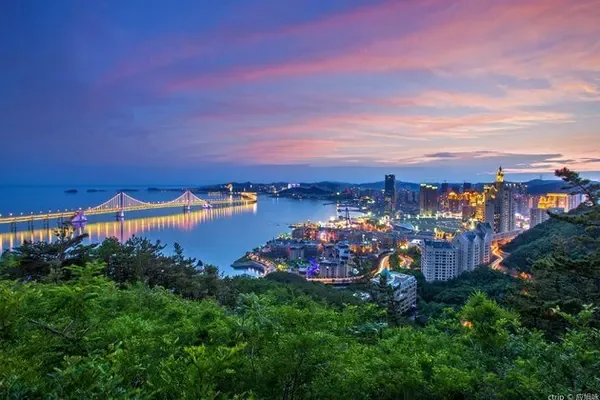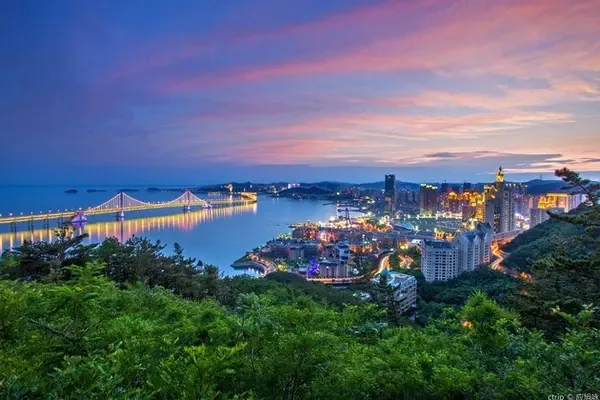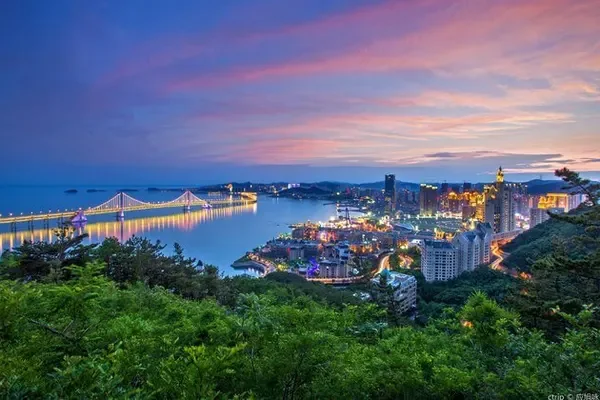In September 2016, my friends and family members and I traveled to Xinjiang by car for the first time, which opened my strong interest in the beauty and humanities of Xinjiang. At that time, due to special reasons, after visiting northern Xinjiang, I gave up traveling in southern Xinjiang. However, the customs of Xinjiang make me feel deeply, and I will never forget the beautiful scenery of southern Xinjiang in the propaganda, the humanities, traditions and cuisines of the people of all ethnic groups, as well as the customs of various ethnic groups.
In the golden autumn of 2020, many tourism advertisements in southern Xinjiang come into view from time to time, which once again arouse the yearning for southern Xinjiang. When my wife searched on the Internet and found the project "Xindian Light and Shadow Collection in Southern Xinjiang 14-day Trip to Southern Xinjiang" published by a travel agency in Xinjiang, I carefully read the full text. This tourism project is very suitable for our couple who are also photography enthusiasts, so we immediately decided: go! We came for a walk-and-go trip, and immediately completed the formalities with the Xinjiang travel agency and signed a contract. Then, the travel itinerary was reposted in our circle of friends of photography enthusiasts, which resonated with the enthusiasts, and then three friends joined our travel ranks.
The itinerary of this travel project was drawn up by the general manager of this travel agency himself, and he is also a photography enthusiast. The characteristics of its itinerary are: the theme of Populus euphratica and the cultural customs of southern Xinjiang, the best time to start the group in late autumn when Populus euphratica is golden, and there is only one group every year, the daily itinerary leaves early and returns late, and captures the best shooting time of morning light and sunset For photography creation, walk when the light is strong.
The starting point of the itinerary is Urumqi. Arrange to visit Sheyuli Luobu Village, Lunnan Tarim Populus Populus Forest Park, Shaya World Populus Populus Forest Park and Aral Sleep Populus Park, take the desert road to Hotan, then go to Zepu to visit Golden Populus Populus Park, go to Kashgar and Taxkorgan Tajik Autonomous County conducts cultural collection and landscape photography. When returning, visit Wensu Tomur Grand Canyon and Tianshan Mysterious Grand Canyon. Return to Urumqi to end the trip. The whole journey is about 5,000 kilometers. The first half is Populus euphratica autumn yellow and desert, and the second half is humanities and natural scenery. With such an arrangement, the representative scenic spots and landscapes in southern Xinjiang have basically arrived.
Xinjiang has a vast territory, the whole area of Xinjiang accounts for 1/6 of the country's land area, and the scenic spots are far away from each other, ranging from two to three hundred kilometers to as many as five to six hundred kilometers. The daily driving usually takes 6 to 10 hours, not to mention There are many beautiful scenery on the side of the road. Whenever there is a good scenery, Mr. Feng will always arrange to stop and create. Therefore, our group of 10 people (7 tourists, 1 driver, 1 tour guide, and 1 team leader) usually set off at 7 o'clock in the morning and leave in the evening. Checking in at the hotel at 11 or 2 o'clock was hard work, but I felt happy and refreshed. Even though they were all in their 60s and 70s, none of them complained of being tired.
We departed from our respective places of residence on October 19th and arrived in Urumqi in the evening. The travel agency arranged for pick-up and transfer to the hotel for a rest. We packed up and set off at 7:00 am on the 20th. At the beginning of our trip, a couple (also tourists) got on the wrong bus and delayed our time by 20 minutes. You must know that there is a 2-hour time difference between Urumqi time and Beijing time. The further you go west, the greater the time difference.
The village of Luobu people in Yuli County, the scenery here is very beautiful: the Tarim River passes between the sand dunes and the village, forming a large river flowing under the sand dunes, and the village on the other side is surrounded by water. People villages create a gorgeous picture in the setting sun. Because the timing of autumn yellow is just right, Populus euphratica is golden. The beautiful scenery stays with people, and the photographers did not stop working until it was completely dark.
Tarim Populus euphratica Forest Park is located in Lunnan Town, Luntai County. I visited this park during a self-driving tour in 2016, because the Tarim River was swollen, and the time choice was wrong, I walked in for one kilometer and then returned. For lunch, I accepted the recommendation of the driver, Master Mao, and enjoyed Uyghur meals at the Uyghur restaurant outside the park. Each person came with a pilaf and a kebab, which was very pleasant. When entering the park, it was agreed to leave the park at 5:30 pm, and go to the Taklimakan Desert No. 1 Desert Highway 0 km to clock in.
Although the park is large in scale and the Populus euphratica forest is relatively concentrated, it is less natural than the Populus euphratica forest that we saw later because of the many man-made facilities. Of course, this Populus euphratica Park is famous in southern Xinjiang and throughout the country.
Desert Highway No. 1 is an oil highway that crosses the sea of death in the Taklamakan Desert. Although the highway project is not huge, and there are no glorious projects to show off, it is difficult to build a linear project in the moving desert. Maintaining it, Ensuring its smooth flow is indeed a persistent and loyal work. Later, we walked through this road from the end of the road to the starting point. This desert road will be further described later, so I won’t repeat it here. We ended our trip for the day after clocking in at 0 kilometers on the highway.
The World Populus euphratica Forest Park is located in a reservoir of the Tarim River in Shaya County. There are poplar trees everywhere around the reservoir and on the mounds in the center of the lake. Unfortunately, the Populus euphratica here is not very yellow. There is still a bit of green, and the leaves on the edge are slightly yellowed; at the same time, the road is still being repaired by the reservoir, and the dust that rises also affects the effect of taking pictures. If it turns golden yellow, the reflection against the quiet lake water should be a good place to make a film.
Interestingly, after leaving the World Populus euphratica Forest Park, we walked through the road surrounded by the Populus euphratica forest. The photographers got out of the car and found a good location to shoot the vehicles passing through the Populus euphratica forest road. A gentleman driving a maroon car also worked as a model for free, and made two trips back and forth for the photographers.
Sleeping Populus euphratica forest (Xinjiang people call the Populus euphratica that dies and never falls) is on the edge of Alar City. There is no need to step on dust and powdery sand under your feet. Due to the construction of the plank road, tickets are charged here.
The sun is more than ten feet above the horizon, which is the best time to take photos of the sleeping Populus euphratica against the light. There are indeed many strange sleeping Populus euphratica in different shapes, and they look like what they look like, and they seem to have a consonance. Still a living creature.
The greed of the photographers for the beautiful scenery caused Teacher Zhang and Teacher Li in the team to get lost after dark. They had already got out of the park's protective fence and were walking on the road. The clever master Mao used the ground facilities to point them in the direction, and at the same time turned on the lights and honked the horn frequently to guide them to find them. Half an hour later, the two returned safely.
In Sleeping Populus euphratica Forest, a screw in Mr. Ma’s glasses from Hunan Province fell off, and the glasses were no longer usable. When he arrived in Alar City, the tour guide accompanied Mr. Ma to the optical shop, and the shop repaired it for free. Alar - the base camp of the 359th brigade, decades have passed, and the descendants of the old revolutionaries still stick to the old traditions.
There are no scenic spots from Alar to Hotan City. Under good sunshine conditions, we photographed the desert style in nature: the shadow lines of sand dunes, Populus euphratica, which have a special flavor, which is purely natural and has a higher affinity than those in the park.
When I arrived in Hotan, I went to the Hetian Jade Trading Market in the Jade City to collect random wind, and then went to the Hetian Yulong Kashi River tidal flat to find treasures. The group members didn’t have any gains, so I picked a few small stones with patterns as souvenirs.
At night, we went to the world-famous Hotan Night Market. Huo! There are quite a lot of southern Xinjiang delicacies here: there are grilled skewers, grilled lamb chops, roasted lamb legs, roasted goose eggs, and three eggs (goose eggs, eggs, and pigeon eggs remove part of the protein, add seasonings, tonics, and put them on the goose eggs. eggs), boiled haggis, sheep's head, sheep's feet, all kinds of pasta, fruits, and jelly.
On October 24th, we went to Populus euphratica Forest Park in Zepu County, Kashgar Administrative District. Before entering the parking lot, the police came to persuade us to return, saying that there was an epidemic and we were asked to leave as soon as possible. We did not say where the epidemic occurred, but only said that the park It's closed, you can't enter it, and I didn't say how long it will be closed, only that it won't open, and it won't open this year. The unexpected event heralded the end of our "Southern Xinjiang 14-day tour to photograph southern Xinjiang" tour. After consultation with the whole group, it was decided to leave Zepu County and return to Hotan City as soon as possible. Then the whole group started to act: check out, refuel the vehicle, and purchase water, naan, and fruit separately. After a nucleic acid test at the checkpoint in Pishan County, Hotan Prefecture, and escorted by a police car, we returned to the end of Desert Highway No. 1 after more than 50 hours.
Desert No. 1 Highway is a highway developed by PetroChina that crosses the Taklamakan Desert from Lunnan Town of Luntai County to Minfeng County of Hotan Prefecture, serving oil exploration, mining and transportation. In order to protect this road from being submerged by wind and sand, the oilmen planted 10-20 meters wide protective grass belts on both sides of the road, and adopted drip irrigation technology to ensure the survival and reproduction of ephedra and tamarisk. On the other hand, in order to maintain the protective grass belt, the oilmen drill a well every 5 kilometers along the road, build a 50-70 square meter drip irrigation guard house, and hire two elderly people (retired workers or migrant workers over 60 years old and in good health) to work in For this protection, daily water pumping and inspection of the management area, daily necessities are delivered by the employer once a week, of course for a fee; production consumables are refueled by the employer every other day, and equipment maintenance is carried out regularly. We visited a hut. The couple are preparing to return to their hometown in Sichuan for the winter at the end of October. They will return to work as caretakers on March 1 next year. Seeing someone coming, I took out the cistanche they collected daily to buy. Not to mention, it's really cheap, 80 yuan a pack, about 300 grams.
When the sun was setting, we arrived at the Tarim River Bridge and got off the bridge to shoot the sunset on the Tarim River. The 0km check-in came in a hurry that day, and I didn't expect to be able to make up lessons at this time.
In the early morning of October 29, the whole team returned to Urumqi, and the second trip to Xinjiang was over.
I have not been able to complete the scheduled travel goals in Xinjiang twice, will I have a third trip to Xinjiang in this life? I think so! If you haven’t been to Kashgar, you haven’t been to Xinjiang!
Farewell to Xinjiang! Farewell friends in Xinjiang, we will meet again if we are destined!
Tourists: old and new
November 11, 2020



